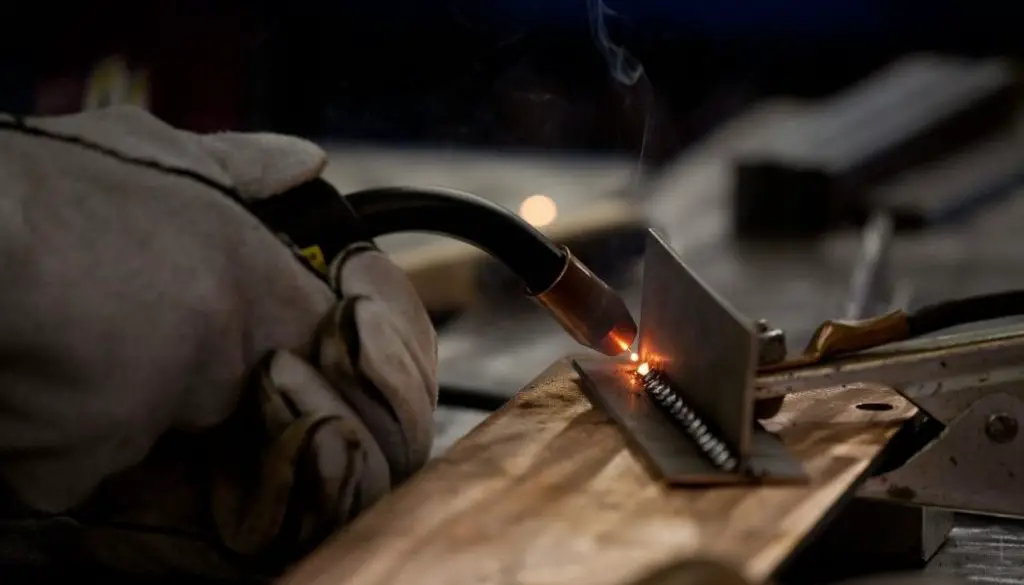Yes, MIG welding is generally considered easier than stick welding due to its continuous wire feed, smoother arc, and lower skill requirement. MIG welding produces less spatter, offers better control, and requires less clean-up, making it a more beginner-friendly process compared to stick welding.
When you’re getting started with welding, you want a type of welding that is easier to use and set up for your workshop. However, with so many different types of welding, it can be hard to figure out which is best for a beginner. Everyone knows TIG welding is more complex, but people sometimes can’t decide whether MIG welding is better than stick welding.
MIG welding is recommended for beginners because it is easier to use and offers a much cleaner experience. However, stick welding still has its uses. Many professionals still use stick welding because of its versatility.
Here is your complete guide to the differences between these two types of welding.

Table of Contents
How to MIG Weld
Before we get into the differences between the two welding types, let’s explain what they are in more detail.
MIG welding, or Metal Inert Gas welding, uses a consumable wire electrode to weld metal. The electrode gun also spurts out shield gas, which is fed into the mechanism from a tank.
The electrode wire touches the base metal, creating an electrical arc. As the arc forms, the wire begins to melt, forming the weld pool without needing an additional filler rod. Meanwhile, the gas creates a shield around the weld, protecting it from oxidation and other forms of damage.
MIG welding is a bit of a complex set-up, but the actual process of welding is fairly easy and smooth.
How to Stick Weld
Stick welding, which is sometimes called arc welding or shielded metal arc welding (SMAW), is a type of welding that uses a stick as the electrode. The welding machine has an electrode holder and a stick. Inside the stick, there is a wire core with a flux coating. The wire melts and forms the filler metal, while the flux creates the shield gas.
To start stick welding, strike the electrode against the base metal. This forms the arc, which melts the consumable electrode.
Stick welding is a pretty simple set-up and simple to learn. It is also very versatile. Welders can use stick welding for all types of joints and all types of metals, including rusted and damaged base metals. However, mastering the nuances of the technique is a bit more difficult.
Differences Between MIG and Stick Welding
There are a few major differences between MIG and stick welding, although the basic principles of welding are the same.
1. Shielding Mechanism
Having a shield gas in place while welding is important because the air around the weld contains a lot of gasses, such as oxygen and water vapor, that can react with the weld. A shield gas forms a protective cloud around the welding arc that prevents these other gasses from getting in.
Both MIG and stick welding have shield gasses, but differ in how this gas is delivered. MIG welding machines are connected to a gas tank, while stick electrodes have a flux coating that melts to form gas.
2. Versatility
MIG and stick welding differ in terms of the usage condition. While MIG welding is versatile, stick welding has a much wider variety of applications. You can stick weld outside no matter the weather conditions (as long as it isn’t raining), while MIG welding is impossible in windy conditions because it blows away the shield gas.
Stick welding machines are much lighter and more portable than MIG welding machines, so it is easier to take them for welding jobs on the go. You can also use stick welders on dirty surfaces, while MIG welds only stick to clean surfaces.
3. Weld Quality
Both welding machines produce quality welds for someone that knows what they’re doing. However, stick welding fluctuates in quality more often. It also creates more messy welds.
Why Is MIG Welding Easier?
Although stick welding is more versatile, MIG welding is easier for beginners. MIG welding is inherently more precise than stick welding, requiring less control on your part. Once you set up MIG welding, it’s easier to continue because the wire feeds continuously, you don’t have to stop and swap the electrode like you do for stick welding. Finally, MIG welding creates less splatter, making the whole process easier.
So if you’re looking for:
- Precision
- Clean welds
- Welding machines that you just push a button and they go
MIG welding is the better choice.
Final Thoughts
MIG welding and stick welding both have their advantages and disadvantages. Stick welding is easier to set up and more versatile. While MIG welding is more finicky at first, it is much easier to use once you actually get started and produces high-quality welds with less effort on your part. The process of finishing the weld is easier with MIG welding because you have less clean-up to do.
